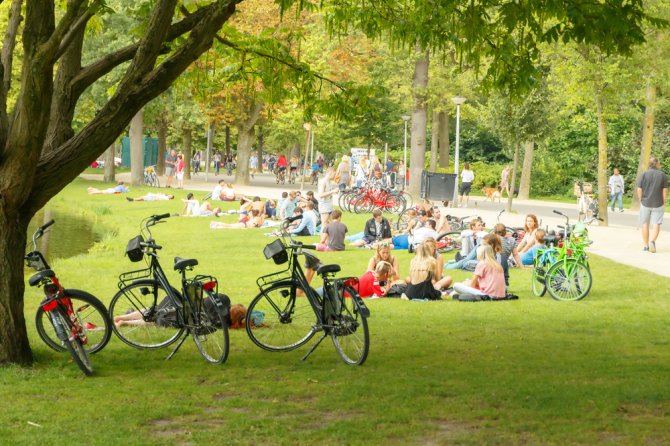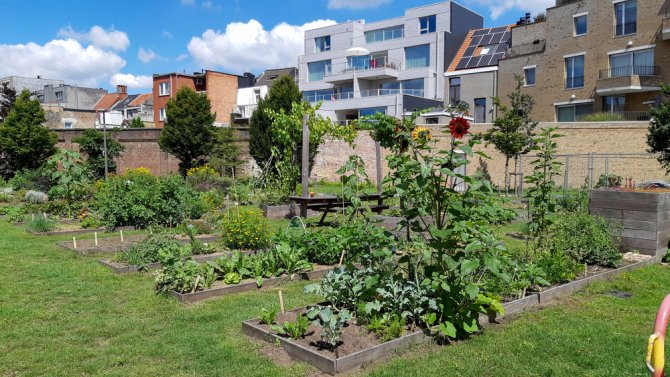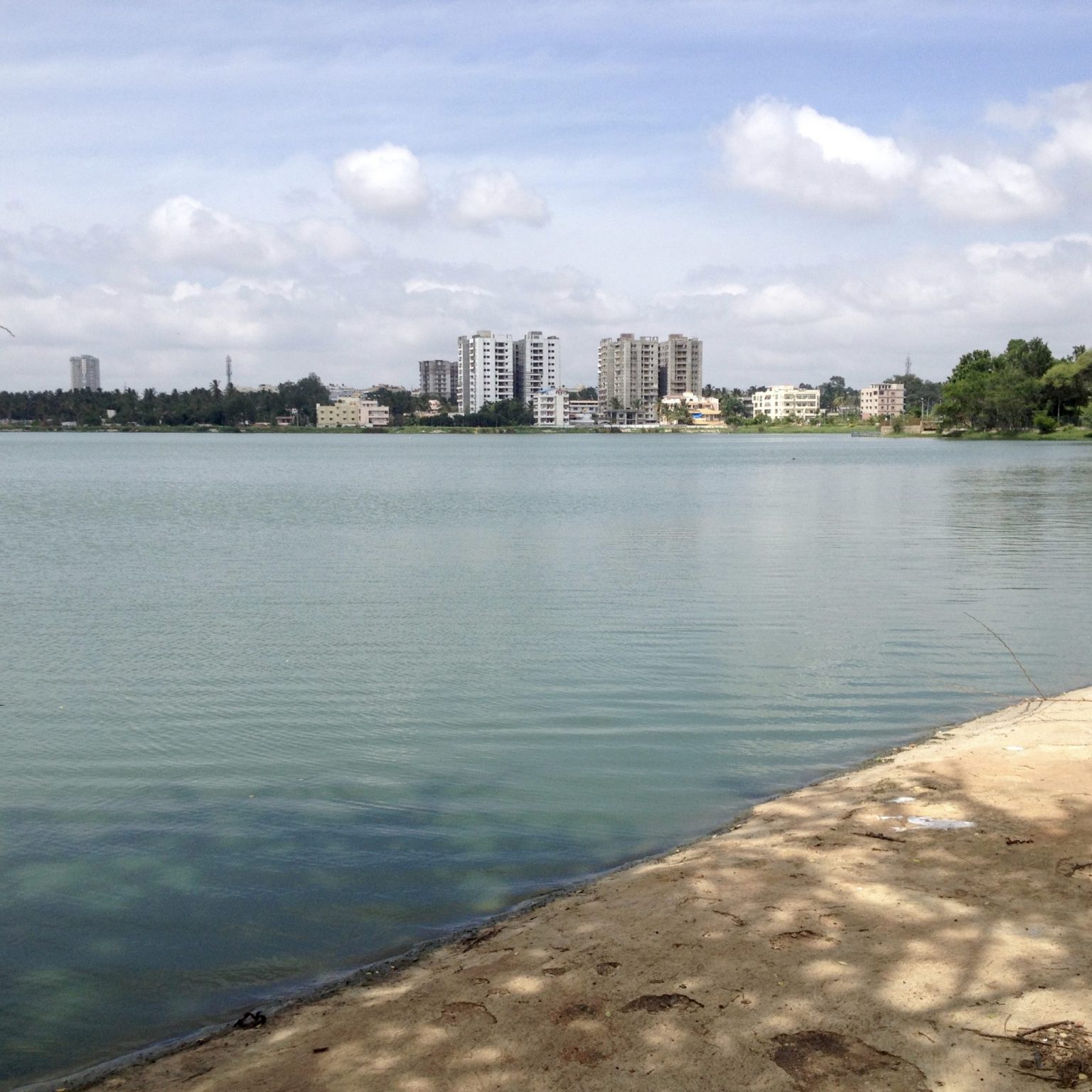Courtesy : www.wur.nl
Green exciting cities
If you cycle through a city on a warm summer’s day, you will feel differences in temperature. Cool areas along the water or under the shade of a lane of trees, warmer along a busy road or in areas with little shade. Stating the obvious? Perhaps. Still, the green city is not yet used to its full potential. Moreover, green is unevenly distributed over the different neighbourhoods, resulting in social inequality.
‘The term “green in the city” immediately calls forth images of parks, rows of trees and public gardens’, says Marian Stuiver, Green Cities programme leader at Wageningen University & Research (WUR). ‘But urban green also includes collective vegetable gardens. The latter not only provide access to fresh food, but also bring people closer together. Urban green reduces social differences.’
Urban green reduces social differences
More nature in urban areas helps cool the city. Temperatures in green neighbourhoods are up to two degrees Celsius lower than in neighbourhoods with less vegetation. Moreover, green areas have better drainage. Nature increases our happiness and reduces stress. Urban farming -all types of urban food systems – provides city-dwellers with access to healthy food.
To date, access to green and fresh food is unequally distributed. Neighbourhoods with a lower socioeconomic status have less vegetation and poorer air quality. This impacts the residents’ health from an early age. Children in green neighbourhoods are less likely to be overweight. Moreover, there is a relationship between the amount of vegetation in neighbourhoods and the amount of ADH medication used by its residents. More green means fewer pills.

However, simply planting more green is not always a solution. Paradoxically, additional measures often make living in a green environment a luxury, including in cities in the Netherlands. More vegetation makes neighbourhoods more attractive and leads to increasing real estate prices. This causes “green-gentrification”. Housing in green neighbourhoods becomes unattainable for large groups of people.
A green city for all is thus not something that simply happens. Policymakers must actively ensure that residents from different neighbourhoods and with various socioeconomic statuses have access to green. Simply put: they must make plans that benefit those that are to benefit from the urban vegetation. Who are these people, and what do they need? How can they contribute to a greener city? In short: how can we make urban nature accessible to as many people as possible. Some examples of Wageningen research demonstrate the possibilities.
Local, with the locals
When designing a city or neighbourhood, the involvement of the intended residents will lead to the best results (for the residents). Marian Stuiver explains: ‘You must consider who will eventually use the outcome of your plan. Do I know these people? If not, why and on what basis am I developing my design?’
A good example is the exploration of urban farming in the Amsterdam-Zuidoost neighbourhood, conducted by WUR in collaboration with the Amsterdam Institute for Advanced Metropolitan Solutions (AMS Institute). ‘Amsterdam-Zuidoost is a lively neighbourhood with residents from different backgrounds,’ says Eveline van Leeuwen, scientific director of the AMS Institute and professor at WUR. ‘These people value their eating traditions. But some ingredients are hard to come by. Moreover, importing exotic vegetables increases the ecological footprint. The question thus is: can we produce these crops locally? And if so, how?’
You must consider who will eventually use the outcome of your plan. Do I know these people?
The latter depends on local goals. Van Leeuwen: ‘It is best to address large issues such as s sustainable food supply and climate-proof cities, locally. There, you will find the best solutions, as the challenges differ per region.’
In Amsterdam-Zuidoost, collective vegetable gardens may be the correct solution. Van Leeuwen: ‘Professional farmers may have greater yields, but in this case, eating together and fostering integration in the neighbourhood are also important aspects. A good reason to choose vegetable gardens. It is important to know that a project does not need to be big or long-lasting to be successful.’

The food hubs in Washington DC that Marian Stuiver is studying with Sabine O’Hara (University of the District of Columbia) are relatively small and still successful. The food hubs are located in neighbourhoods where access to food is limited, figuratively and literally. The nearest supermarket may be as far as eight kilometres away. ‘By operating in these neighbourhoods, we create islands of green that make nature and fresh food accessible’, says Stuiver. ‘This local effort is sorely needed for an equal city.’
The food hubs are used for the production, preparation and distribution of healthy products. As well as for education about nutrition, diet and health and to coach local entrepreneurs. Because, in addition to developing tangible green in the city, knowledge also decreases social inequality. It is essential to benefit from the knowledge that is already available in the neighbourhood. Involving residents allows them to contribute their expertise and ensures vegetation that meets their needs.
Have an honest and realistic discussion
Even more striking: civilian initiatives often have a pioneering role in implementing the neighbourhood’s wishes. They frequently fill the gaps in the municipalities’ policies with sustainable energy, private waste management and collective vegetable gardens.
An interesting development, according to Martijn Duineveld, associate professor of cultural geography at WUR. ‘Governments use a lot of rhetoric, but what they really mean is “we want more participation, but only within the framework we choose”. When civilians speak of participation, they are referring to self-management. This leads to disappointment.’ The challenge for civilians and government is to have an honest and realistic discussion.





